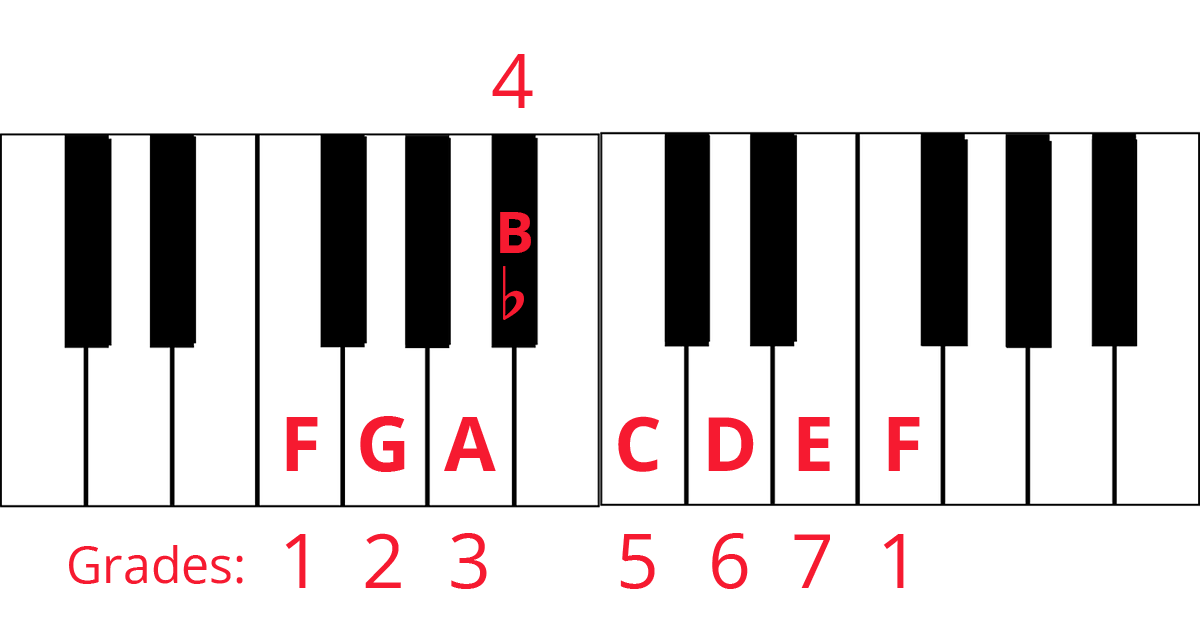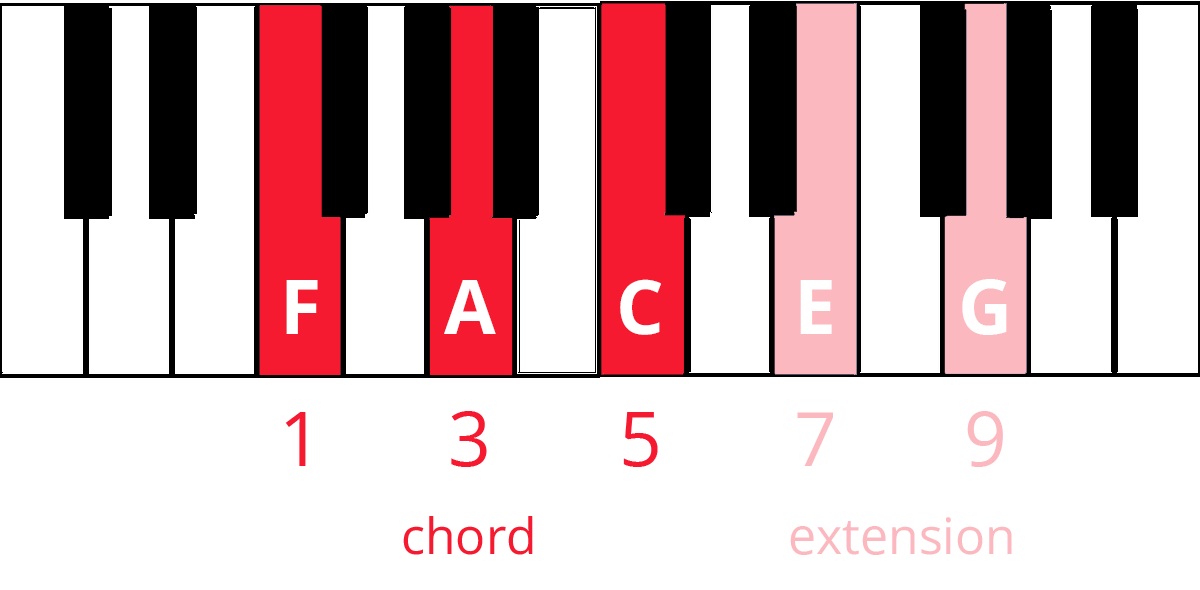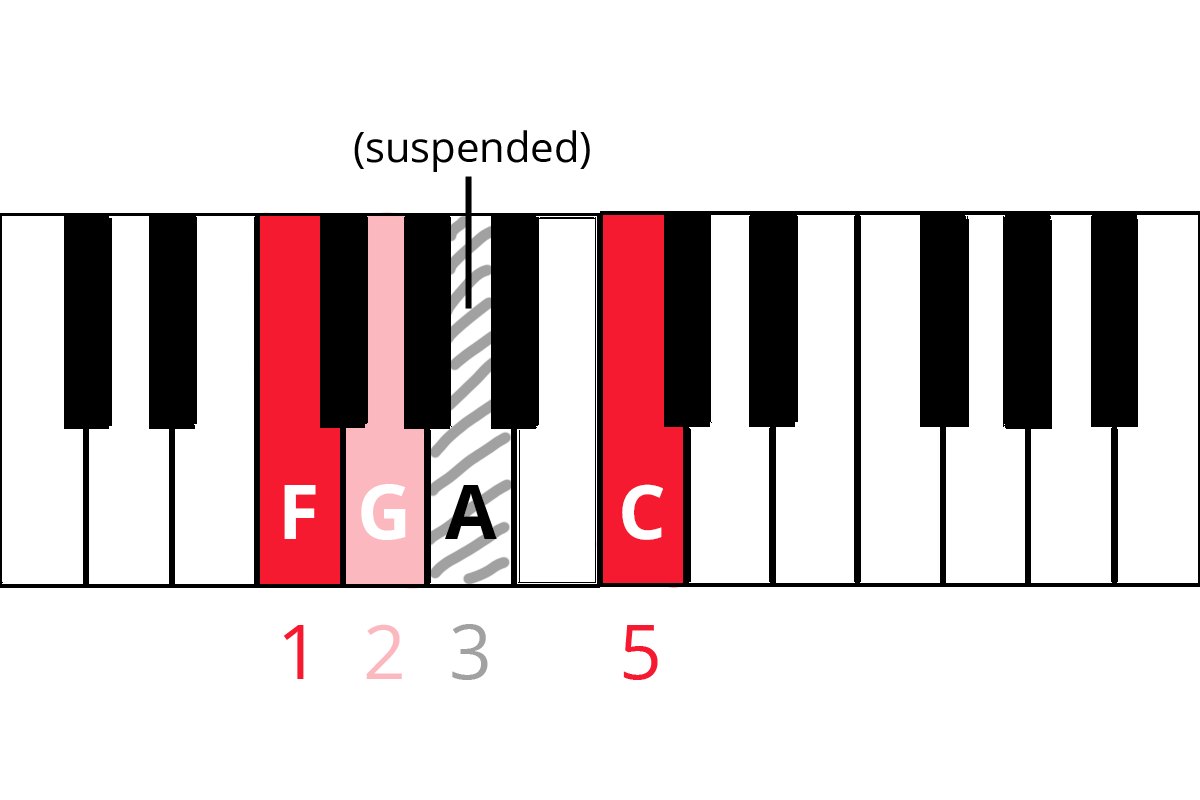In our time working with pro pianist Jesús Molina, I’ve noticed something magical. Jesús can pull a beautiful melody out of thin air.
How does he do this?!
Well, a lot of it is practice. Jesús spends 30 minutes of every practice session on free improvisation. He gets to know his keyboard very well during these periods.
He has other insights, which we’ll break down in this lesson.
Subscribe to The Note for exclusive interviews, fascinating articles, and inspiring lessons delivered straight to your inbox. Unsubscribe at any time.
The first thing Jesús asks me to do is pick a scale. We pick F Major, which has one flat.

It’s important to know your scale very well. That’s because we’ll pull our melody from these notes.
So, if you’re a beginner, improvise with a scale you know well first. Scales without a lot of sharps and flats, like C Major or G Major, are good for beginners. Eventually, though, you want to be able to improvise in all keys.
You can warm up by practicing your chosen scale a few times before improvising.
After we pick our scale, Jesús reviews with us the grades of the scale. This is just a fancy way of assigning numbers to each note. For example, A is the third grade (or third note) of F Major.

Another word you may have heard is “degrees” of the scale. They’re essentially the same thing, grades and degrees, and you can learn more about them in our lesson about the piano number system.
Since melodies are different combinations of different scale grades within a scale, knowing your grades will help you figure out melodies, and then later, harmonies.
Jesús always tries to hear the melody in his head first before he plays it. Then, with his knowledge of scale grades, he can quickly bring the melody to life on the keyboard.
If you’re a beginner, this step can feel like a big leap. It takes practice.
You’ll notice that Jesús sings along to what he’s playing. You can try this too! In fact, singing along to what you’re improvising links what you hear in your head and what you play on your instrument.
Here’s a great saying from one of Jesús’ interviews: “With good tempo, literally everything sounds good!”
Sometimes, we get so preoccupied with the notes that we forget the rhythm part of our playing! Notice that Jesús pays attention to the rhythm of his improvised melody right away. Without the unique rhythm he’s chosen for his melody, it would sound very different.

We’re proud to announce Jesús as our Pianote Coach. His exclusive course on Improvisation and Musical Freedom will change the way you think about the piano.
He’s broken down the lessons into different levels of difficulty. So it doesn’t matter where you are in your piano journey — you CAN learn how to improvise.
Jesús’ course can be found in the Pianote Members’ Area. But if you’re not sure whether you want to join Pianote yet, try it for free first.
The next tips have to do with harmonizing our little melody. If you’re new to chords, you may want to refer to these lessons:
Knowing your scale grades will help you find harmonizing chords.
For example, our melody starts on the fourth grade of F Major (B-Flat) and that part of the melody harmonizes well with a B-Flat Major chord too.
If you’re not sure what chords harmonize with your melody, explore the diatonic chords in the scale you’re improvising in.
Diatonic chords sound great, but let’s make them more unique. One way we can do this is by using chord extensions. You can also play these as suspensions.
For example, Jesús takes an F Major chord (F-A-C) and adds a ninth (F-A-C + G). The G is nine notes up from F.

You can also play it right next to the F, in place of the A. This makes the chord an Fsus2.

Note that Jesús doesn’t play these chords in exactly the same order of notes. For example, he skips the seventh (E) and he plays his F chord over A in the bass, making it technically an Fsus2/A or a chord in first inversion. These little touches further make Jesús’ improvisation uniquely his.
Learn more:
The reason Jesús uses Fsus2 is because it incorporates the G in his melody.
This is voice leading at work. When certain notes pull the chord progression of a song a certain direction, that’s voice leading.
One way to practice hearing voice leading is to practice inversions of your favorite chords. In this example, Jesús takes Fmaj7(sus2) through a series of inversions. You can hear how voice leading pulls the ear through the inversions.
Now that we’ve explored ways to make our chords more interesting, here’s a trick: pull them apart again and make melodies out of them!
Jesús sums it up nicely: “All melodies are chords.”
It’s simple: chords that sound nice can be turned into melodies that sound nice!

The way Jesús comes up with melodies looks magical, but it’s a skill he practices. In fact, Jesús spends 30 minutes of his daily practice routine exploring like this.
For beginners, improvising complex melodies and harmonies may seem intimidating. It takes time, practice, and ear training. If you want to start on the right foot (or hand!), make sure you check out Jesús Molina’s Improvisation and Musical Freedom course included in the Pianote Members’ Area.
And if you’re not sure whether you want to be a member yet, try it out for free or check out these other free lessons with Jesús Molina:
As a Pianote Member, you’ll get access to our 10-step Method, song library, and growing community of piano players just like you. Plus: get coached by world-class pianists who have played with rock stars.
Lisa Witt has been teaching piano for more than 20 years and in that time has helped hundreds of students learn to play the songs they love. Lisa received classical piano training through the Royal Conservatory of Music, but she has since embraced popular music and playing by ear in order to accompany herself and others. Learn more about Lisa.
/marketing/pianote/promos/april/banner-bg-m.webp)
We use cookies for traffic data and advertising. Cookie Policy »
/marketing/pianote/promos/april/banner-title.webp)